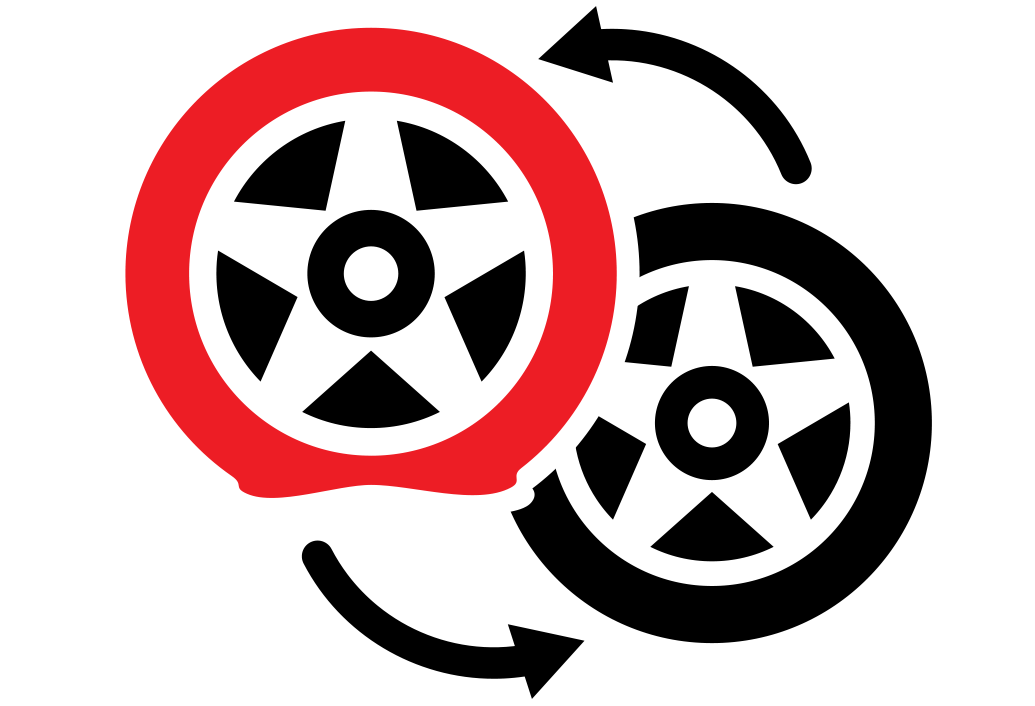We would always recommend getting your tyre changed by a professional Uniroyal dealer but, if you’re determined to change a tyre yourself, it’s important you know how do it safely.
Before you begin

Firstly, make sure you’re in a safe, flat area away from passing traffic. If you have a blow out on the motorway it is far safer to call for roadside assistance than attempt to change a tyre yourself.
Assuming you’re in a safe area, check the equipment you have and what your options are. For example, does your car have a full-size spare wheel, a skinny temporary spare or did it come with a puncture repair kit? Does the spare have adequate tread and is it fully inflated?
A full-size spare wheel
Before you even start to change a tyre, read your vehicle’s handbook. It will detail any peculiarities about your make and model, list the tools they’ve supplied and show you where to attach the jack. This final point is very important.
Ask your passengers to get out of the car, switch off the engine and turn on your hazard lights. Put your handbrake on and put the car into first gear (or P if it’s an automatic). To stop your car from rolling once it’s been jacked, put a chock under the wheel that’s diagonally opposite from the punctured one. If you don’t have a chock, a large rock or log should do the job.
Always refer to your manufacturer’s handbook for specific instructions.
There you will discover:
1. If you have a full-size spare tyre
2. If you have a temporary ‘skinny’ tyre
3. If you have a puncture repair kit
4. If you have locking wheel nuts.
5. Where exactly to position the jack.
6. Your tyre pressure requirements.
7. Whether to expect any warning lights post tyre change.
Get your spare ready and put it within arm’s reach. Remove your wheel trim, if you have one, to expose the wheel nuts. Place the jack in the area stated in your handbook, taking care to engage it fully. Then, use the jack to raise the car slightly, no further than when it starts to lift the vehicle off its springs.
Loosen the wheel nuts using your wheel wrench and, if necessary, your locking wheel-nut adapter. Then you can raise the car, using the jack, until it’s off the ground. Undo the nuts completely, leaving the top one until last. You may need to use your knee to support the wheel while you do this.
A temporary ‘skinny’ tyre
The process is the same for fitting a ‘skinny’ tyre but read your handbook carefully before you fit it as it may set some of your warning lights off. You’ll only be able to drive a short distance and at a restricted speed so it’s best to head straight for your nearest Uniroyal dealer.
A puncture repair kit
Follow the instructions on the packaging carefully as these may vary from one kit to another. Although these kits make it easier than changing a wheel, do bear in mind that they are a temporary solution and they won’t be able to deal with major blow outs. As with temporary ‘skinny’ tyres, you should get to your Uniroyal dealer as soon as possible to get your repair checked.
Related Topics
-
 2023/03/31Find out more about the differences between asymmetrical and directional tyre tread patterns, and discover how Uniroyal has combined the best of both with the RainSport 3.Which different tread patterns are there?Read more
2023/03/31Find out more about the differences between asymmetrical and directional tyre tread patterns, and discover how Uniroyal has combined the best of both with the RainSport 3.Which different tread patterns are there?Read more -
 2023/03/31Changing and rotating tyres: Read on to find out why tyre rotation is important. And whether the good tyres should go on the front or rear.Good tyres on front or rearRead more
2023/03/31Changing and rotating tyres: Read on to find out why tyre rotation is important. And whether the good tyres should go on the front or rear.Good tyres on front or rearRead more -
 2023/03/31If you swap between summer and winter tyres, you have to consider where you will store the unused set in the months when they’re out of action.Storing tyresRead more
2023/03/31If you swap between summer and winter tyres, you have to consider where you will store the unused set in the months when they’re out of action.Storing tyresRead more